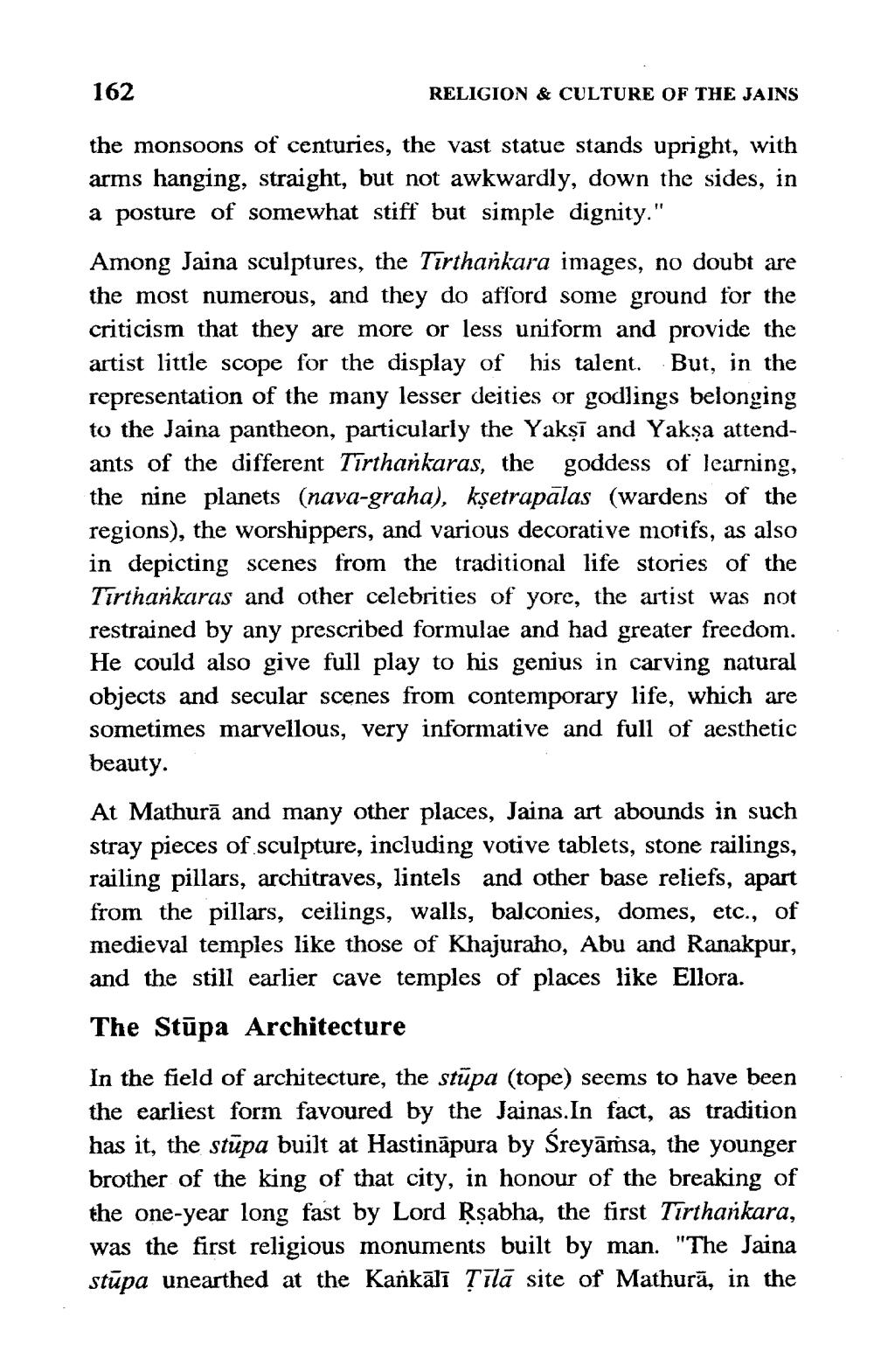________________
162
RELIGION & CULTURE OF THE JAINS
the monsoons of centuries, the vast statue stands upright, with arms hanging, straight, but not awkwardly, down the sides, in a posture of somewhat stiff but simple dignity." Among Jaina sculptures, the Tirthankara images, no doubt are the most numerous, and they do afford some ground for the criticism that they are more or less uniform and provide the artist little scope for the display of his talent. But, in the representation of the many lesser deities or godlings belonging to the Jaina pantheon, particularly the Yakṣī and Yaksa attendants of the different Tirtharkaras, the goddess of learning, the nine planets (nava-graha), kşetrapālas (wardens of the regions), the worshippers, and various decorative motifs, as also in depicting scenes from the traditional life stories of the Tirtharkaras and other celebrities of yore, the artist was not restrained by any prescribed formulae and had greater freedom. He could also give full play to his genius in carving natural objects and secular scenes from contemporary life, which are sometimes marvellous, very informative and full of aesthetic beauty. At Mathurā and many other places, Jaina art abounds in such stray pieces of sculpture, including votive tablets, stone railings, railing pillars, architraves, lintels and other base reliefs, apart from the pillars, ceilings, walls, balconies, domes, etc., of medieval temples like those of Khajuraho, Abu and Ranakpur, and the still earlier cave temples of places like Ellora. The Stūpa Architecture
In the field of architecture, the stūpa (tope) seems to have been the earliest form favoured by the Jainas. In fact, as tradition has it, the stūpa built at Hastināpura by Sreyāṁsa, the younger brother of the king of that city, in honour of the breaking of the one-year long fast by Lord Rşabha, the first Tirtharikara, was the first religious monuments built by man. "The Jaina stūpa unearthed at the Kankālī Tīlā site of Mathurā, in the




